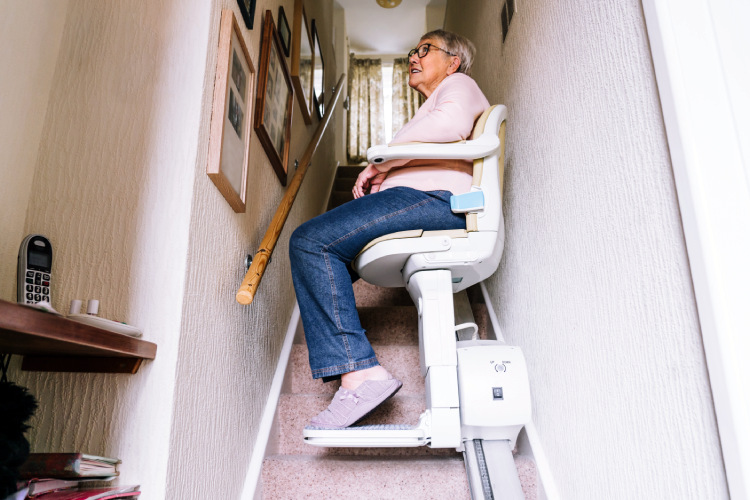Stairlifts are invaluable tools for enhancing mobility and independence, particularly for the elderly or those with physical limitations. Installing a stairlift in your home can be a significant decision. This guide will walk you through the process, ensuring that you make informed choices every step of the way.

Assessing Your Needs and Home Layout
Before considering a stairlift, assess your specific needs and the layout of your home. Determine whether the primary user has any particular requirements, such as a swivel seat for easy dismount.
Additionally, examine your staircase. Is it straight, curved, or does it have multiple landings? The type of staircase you have will significantly influence the kind of stairlift you need.
Choosing the Right Stairlift
Once you’ve assessed your needs, it’s time to choose the right stairlift. For straight staircases, a standard stairlift model will suffice. However, curved staircases require custom-designed stairlifts. Consider features like the size, weight capacity, and whether an outdoor model is needed for exterior steps.
Professional Assessment and Quotation
It’s advisable to get a professional assessment of your staircase and a quotation. Most reputable companies offer a free home visit to take measurements and discuss your requirements. This step is crucial in getting an accurate idea of the costs involved and the best stairlift for your home.
Understanding the Installation Process
Stairlift installation typically involves fitting a track to your staircase rather than the wall. This process can take a few hours to a full day, depending on the complexity of your staircase. It’s essential to understand the installation process and timeframe to plan accordingly.
DIY vs Professional Installation
While some may consider a do-it-yourself approach to save costs, stairlift installation is generally best left to the professionals.
The intricacies of fitting a stairlift correctly require expertise to ensure safety and proper functioning. You must use a company to install everything correctly.
Aftercare and Maintenance
After installation, understanding the aftercare and maintenance of your stairlift is essential. Regular maintenance checks are recommended to ensure your stairlift remains safe and operational. Inquire about the services and warranties offered by your provider to cover future maintenance needs.
Financial Considerations and Support
The cost of stairlifts varies depending on the type and features. It’s important to consider your budget and explore financial support options available, such as grants or funding from local authorities or charities. Compare different models and providers to find the best deal that fits within your financial plan.
Making an Informed Decision
Finally, making an informed decision is crucial. Take the time to research, consult with experts, and consider all the factors involved, from your personal needs to budget constraints. Choosing the right stairlift can significantly improve your quality of life, making this decision an important one.
Conclusion
Installing a stairlift in your home can dramatically improve mobility and independence, especially for those facing physical challenges.
By carefully assessing your needs, choosing the right model, understanding the installation process, and considering the financial aspects, you can make a decision that enhances your living environment and provides peace of mind. Remember, professional advice and installation are key to ensuring the safety and longevity of your stairlift.




